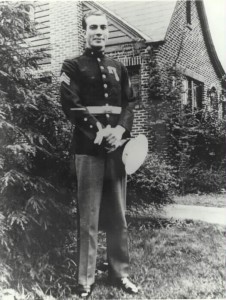Military Milestones from the Battle of Camden to Banzai Attacks at Tenaru

Originally published at Human Events
Aug. 16, 1780: The Battle of Camden (S.C.) — one of the worst tactical blunders on the part of the Continentals during the American Revolution — opens between British Army forces under the command of Gen. Sir Charles Cornwallis and Continental Army forces under Gen. Horatio Gates.
Though the Americans will be decisively defeated at Camden — thanks to Gates’ improperly positioning inexperienced militia against seasoned regiments of the regular British Army, as well as his complete loss of tactical control — the battle will prove to be something of a highwater mark for British forces in the southern colonies.
Gates himself will break and run, earning him the nickname, “Galloping Gates.” But the heroics of many of the ill-fated Continental officers and men (like Gen. Johann Baron de Kalb) will prove to be exemplary. And Gen. George Washington — always able to recover from strategic setbacks — will choose the exceptionally able Gen. Nathanael Greene as Gates’ replacement.
Aug. 16, 1940: Soldiers with the U.S. Army’s parachute test platoon begin jumping over Fort Benning, Ga. The airborne exercise (actually more of an experiment) is the first for the Army.
In 2001, Pres. George W. Bush will proclaim “August 16” of each year as National Airborne Day.
Aug. 17, 1942: Ahoy Raiders! U.S. Marine Raiders strike Makin Island in the Gilberts.
Sgt. Clyde Thomason, killed during the fighting, will become the first Marine in World War II to receive the Medal of Honor.
Note: Video of the Marine Raiders can be found here.
Aug. 17, 1943: U.S. Army Gen. George Smith Patton Jr. beats his British Army counterpart Gen. Bernard Law Montgomery to the gates of Messina, Sicily, in what Patton had purportedly referred to as “a horse race in which the prestige of the U.S. Army is at stake.”
Aug. 19, 1812: In one of the most dramatic sea battles of the War of 1812, the frigate USS Constitution engages and captures the smaller frigate HMS Guerriere in a contest of broadsides and close-quarters combat between opposing crews of sailors and Marines (the American leathernecks pouring a terrific fire into the unfortunate British officers and men aboard Guerriere).
According to the Naval Historical Center, “Despite the rational excuse that Royal Navy frigates were not as large and powerful as their American counterparts, the real causes of these outcomes were inspired seamanship and vastly better gunnery. For the rest of the 19th Century, long after the War of 1812 was over, America’s Navy was credited with an effectiveness that went well beyond its usually modest size.”
Constitution (known affectionately as “Old Ironsides”) is the oldest ship in the American Navy. Launched in 1797, she serves today as a duly commissioned ship crewed by active-duty U.S. sailors and Naval officers in order to further public awareness of American Naval tradition.
Aug. 19, 1981: One-hundred-sixty-nine years to the day after the victory over HMS Guerriere, the U.S. Navy — specifically two F-14 Tomcats — knocks down two Libyan Su-22 fighters over the Gulf of Sidra.
Aug. 21, 1863: Confederate guerillas under the command of William Clark Quantrill (operating outside of the control of regular Confederate forces) launch a bloody raid on Lawrence, Kansas.
Quantrill — who purportedly once served in the Missouri State Guard — is widely considered a brigand and a cutthroat. That reputation continues today. To some, however, he remains a folk hero.
Aug. 21, 1942: Just after 3:00 a.m., “Banzai”-screaming Japanese assault forces — primarily members of the elite Japanese Special Naval Landing forces — attack U.S. Marine positions on Guadalcanal in what will become known as the Battle of the Tenaru River.
The first wave is momentarily slowed as the Japanese struggle to get through the Marines’ barbed wire and American rifle machinegun fire rip into their ranks. At one point, the enemy breaks through and the fighting degrades into a savage hand-to-hand struggle with knives, machetes, swords, rifle butts, and fists. The Marines kill scores and hold their positions.
Subsequent Japanese attacks follow, but all are beaten back with heavy losses.
AUTHOR’S NOTE: “This Week in American Military History,” appears every week as a feature of HUMAN EVENTS.
Let’s increase awareness of American military tradition and honor America’s greatest heroes by supporting the Medal of Honor Society’s 2010 Convention to be held in Charleston, S.C., Sept. 29 – Oct. 3, 2010 (for more information, click here).